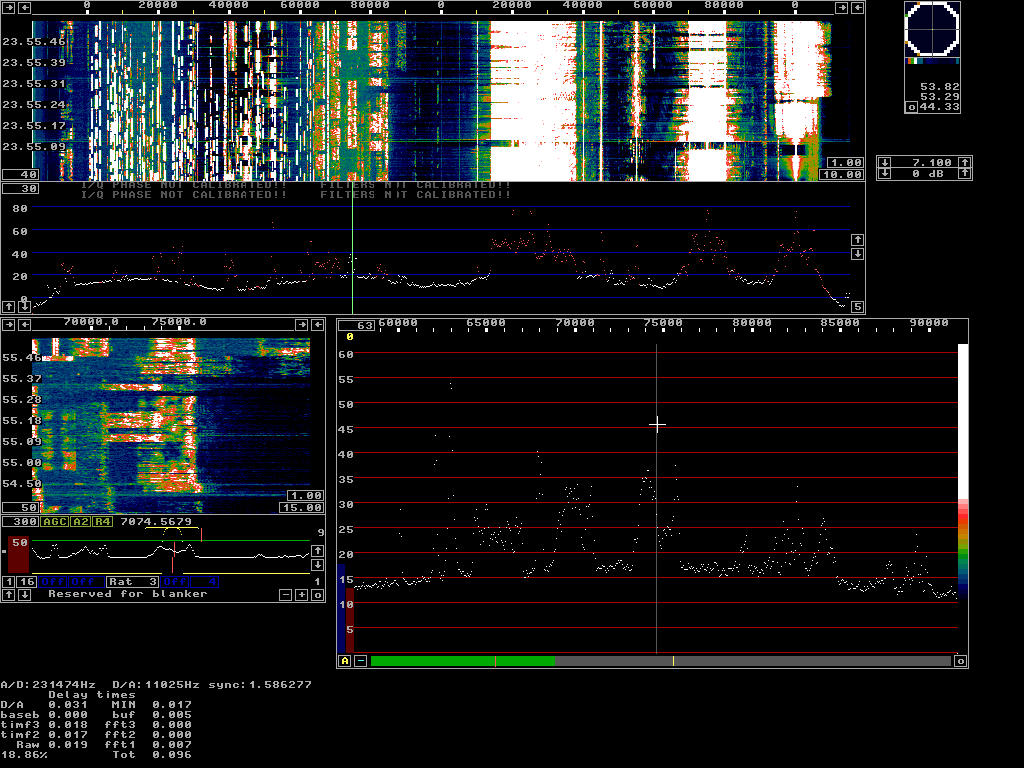
|
The SDR-14
is a small unit based on the AD6644 and AD6620 chips
from analog devices.
The performance of the unit is limited by the 16-bit
data transfer over USB.
Figure 1 shows Linrad under svgalib processing the output from a SDR-14 set to 7.1 MHz at a sampling rate of 231.5 kHz on a 2.7 GHz PentiumIV. The waterfall graphs and the spectrum averagings are set to normal values so the graphics does not cause a heavy load on the CPU. The noise blanker is enabled, but since Linrad was not calibrated for these tests the smart blanker is not running, but that does not affect the timing. The baseband filter is constructed from an FFT with a bin width of about 50 Hz per pixel. With svgalib the time delay is about 100 ms. On the 2.7 GHz PentiumIV the performance is the same with X11 as with svgalib as can be seen from figure 2. The entire set of parameters (for Linrad-02.14) can be downloaded here vwpar.tbz These parameters are for "A=Weak signal CW" but can equally well be applied to the other modes. The key parameters in par_sdr14 are these ones: M_CIC2 [12] M_CIC5 [12] M_RCF [2] and in par_wcw: First FFT bandwidth (Hz) [200] First FFT window (power of sin) [3] Enable second FFT [1] First backward FFT version [1] First backward FFT att. N [6] Second FFT bandwidth factor in powers of 2 [0] Second FFT window (power of sin) [2] Second forward FFT version [2] Second forward FFT att. N [7] Enable AFC/SPUR/DECODE [0] First mixer bandwidth reduction in powers of 2 [3] First mixer no of channels [1] Baseband storage time (s) [10] Output delay margin (ms) [25] Output sampling speed (Hz) [11025] A/D speed [231481] These parameters that run the SDR_14 50% above its maximum speed can be used also on PentiumIII class computers. Figure 3 shows a screen dump from Fedora 4. This is possible only with svgalib, X11 is not fast enough even when a 8 bit colour depth is selected, at least under Fedora 4. See figure 4. More modern X11 servers may well be fast enough, but compiling the ft245 driver for SDR-14 requires kernel header files that I have not been able to find for Suse 9.2 or Fedora 5, the two modern distributions I have installed on the PentiumIII computer. The ft245 drive routine for Linux-2.4 kernels does not allow more than about 190 kHz bandwidth. This is shown in figure 5 for the 650 MHz PentiumIII and in figure 6 for a Toshiba Satellite laptop with a 2.8 GHz PentiumIV. It is not possible to run the SDR-14 Under Microsoft Windows faster than about 190 kHz. An attempt to run at 231.5 kHz on PentiumIV computers produces the results shown in figure 7 for Windows 2000 and in figure 8 for Windows XP. |

|
Fig 1. Debian Etch with ALSA and svgalib on a PentiumIV at 2.667 GHz. |

|
Fig 2. Debian Etch with ALSA and X11 on a PentiumIV at 2.667 GHz. The colour depth is 16 bit. |
|
|
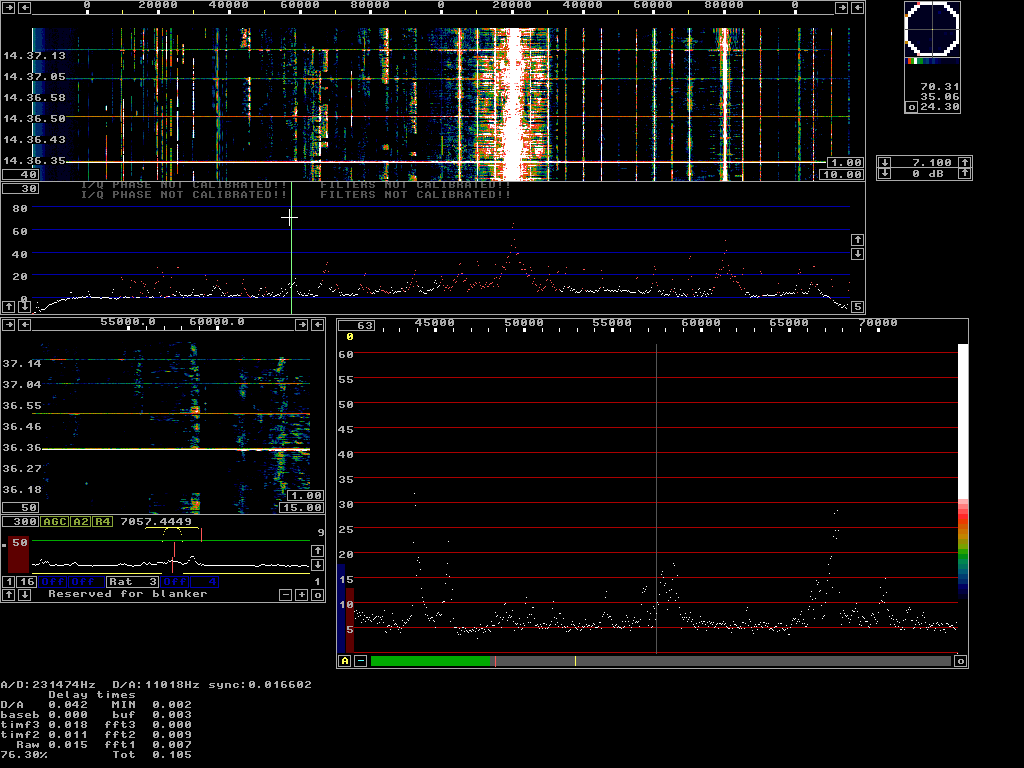
|
Fig 3. Fedora 4 with svgalib and OSS on a PentiumIII at 650 MHz. |
|
|
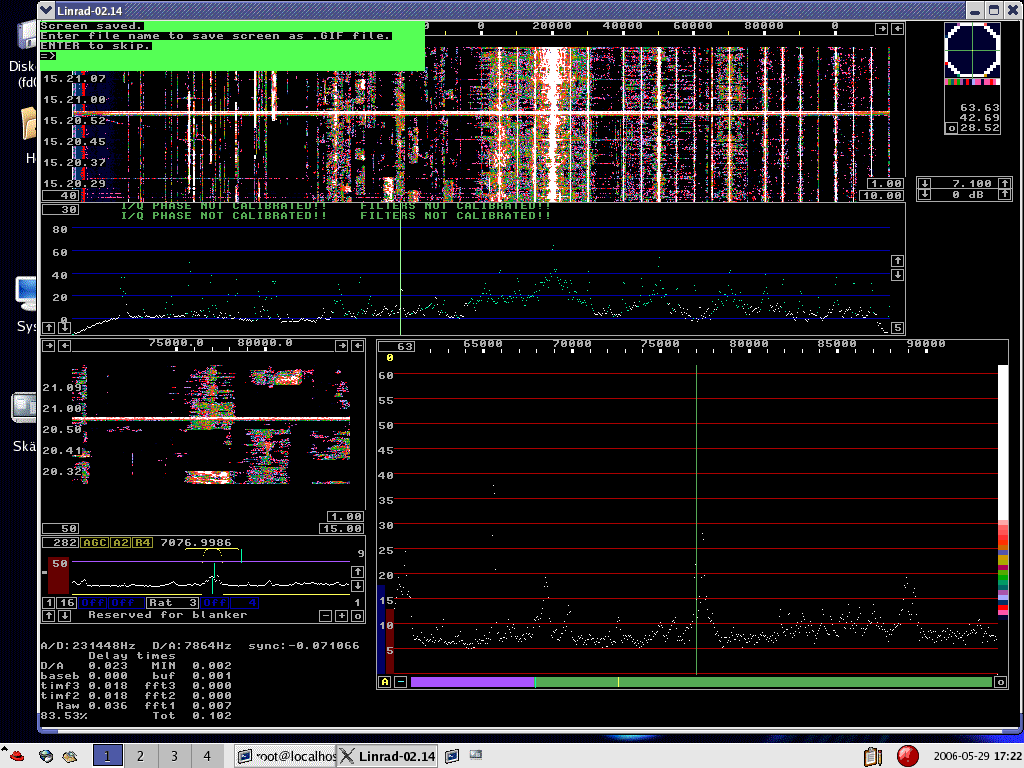
|
Fig 4. Fedora 5 with X11 and OSS on a PentiumIII at 650 MHz. The X11 server is not quite fast enough. Some data is lost at the output side. Note that the colours are correct while Linrad is running - the screen capture does not use the correct palette |
|
|
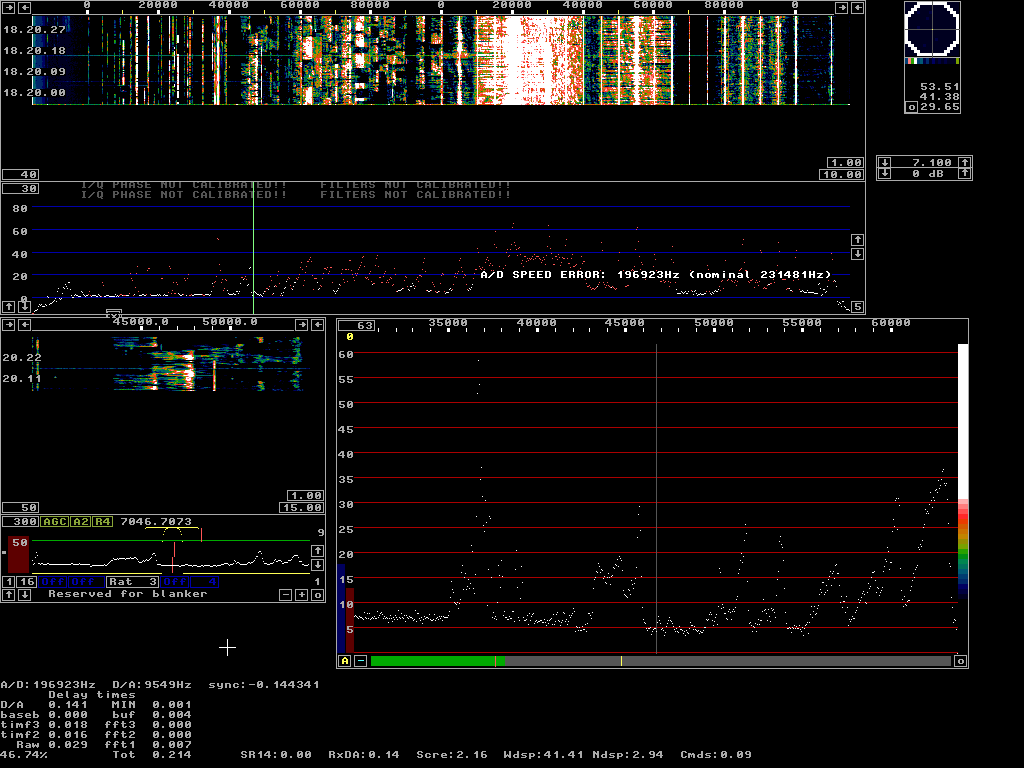
|
Fig 5. Fedora 1 with svgalib and OSS on a PentiumIII at 650 MHz. The Linux-2.4.xx device driver does not allow more than about 190 kHz over the USB link. |
|
|
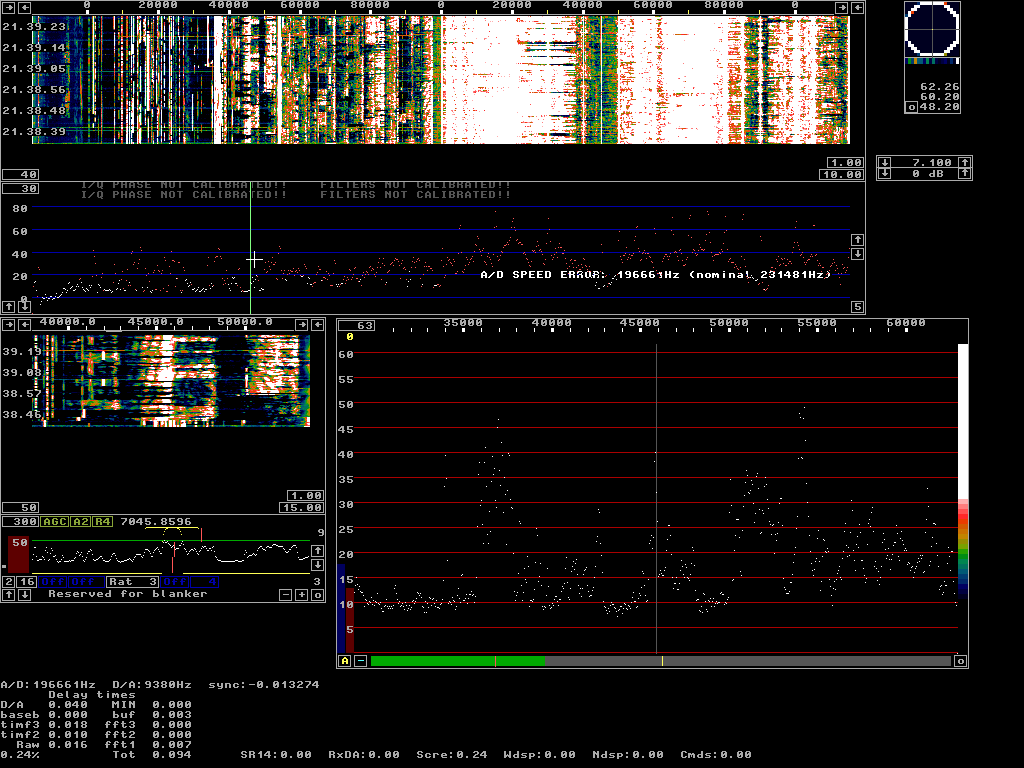
|
Fig 6. Fedora 1 with svgalib and OSS on a PentiumIV at 2.8 GHz. The Linux-2.4.xx device driver does not allow more than about 190 kHz over the USB link even on a fast computer like this one. |
|
|

|
Fig 7. Windows 2000 on a PentiumIV at 2.666 GHz. USB is not fast enough. |
|
|

|
Fig 8.Windows XP on a PentiumIV at 2.666 GHz. USB is not fast enough. |
|
To SM 5 BSZ Main Page |